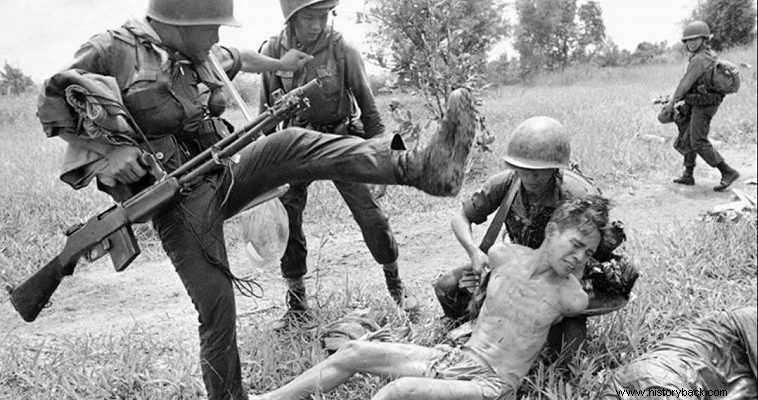
"Pacification" was one of the major euphemisms used by the Americans and the South Vietnamese to cover various activities related to security, counterintelligence, the war economy, and the treatment of civilians. According to the process of pacification , two were the basic tactics of the government forces.
After an area was cleared of Viet Cong, either special police and paramilitary forces were deployed to the area, or, if the area could not be easily secured, it was evacuated of its population.
The main objective of the pacification operations was to counter North Vietnamese propaganda, which was a major weapon in the hands of the Communists. The US generously provided the necessary resources, but without achieving the desired result. The root cause of this failure was none other than the political instability and corruption that plagued South Vietnam.
Even after the massive arrival of American troops in 1966, which resulted in a relative stabilization of the military situation, the short-lived Saigon governments never succeeded, throughout the war, in curtailing North Vietnamese influence and increasing their own them to the populations of South Vietnam. Programs such as the "fortified villages" of South Vietnamese President Diem, or the equivalents followed by his successors, were by no means popular.
After all, for the majority of South Vietnamese, the war meant nothing, since subsistence was the most pressing problem. Every "peacemaking" operation should, by definition, take this factor into account.
Since the country was basically based on the agricultural economy, the respective governments had to turn their attention there, supporting the agricultural class and especially the small farmers, who also formed the core of South Vietnamese society. But something like this never happened.
The farmers neither felt safe, since they were not protected by the government forces, nor were they ever financially supported by the corrupt Saigon governments. For their part, the Americans allocated huge sums to "pacification", even setting up a special management organization, CORDS (Civil Operations Rural Development Support), which gradually became involved in other activities, more military.
Financial aid was also offered to South Vietnam by Australia and New Zealand. The situation improved somewhat in 1967, after the formation of the new government of President Thieu. New measures were taken, under American pressure, such as the organization of militia forces per village, the expansion of "fortified village" type programs, etc.
The result of all this was, in 1967, that 67% of South Vietnamese territory was considered safe. However, this number was rather fictitious, as was seen during the Tet attack in January 1968. Despite their defeat on the battlefield, the North Vietnamese succeeded in creating a new wave of terrified peasants, who were abandoning their land and fleeing, pariahs, to the cities.
However, the Americans tried to take advantage of the defeat of their opponents, accelerating the various "pacification" programs and starting parallel operations to undermine the opponent's propaganda. One of them was the infamous "Phoenix" program, which provided for the "neutralization" of communists and sympathizers living in South Vietnam and the disclosure of North Vietnamese nuclei. "Neutralization" did not always mean murder.
In many cases many communists or their collaborators were imprisoned or persuaded to defect. Especially after the failure of the Tet Offensive and due to the terrible losses they suffered, the North Vietnamese largely lost control of the South Vietnamese territories.
Also, for the first time, there was a serious decline in their morale, so that in 1969, automoles reached, on average, 4,000 monthly. It was the golden age of "pacification". Subsequently, some benevolent measures for the population were taken by the government of Saigon, such as a partial reclamation, thanks to which 600,000 farmers received land lots.
However, everything took a while. As the Americans gradually began to withdraw forces, the old diseases reappeared. The South Vietnamese Army, a product of South Vietnamese society, appeared weak in dealing with the reorganized enemy, while South Vietnamese society itself showed that it did not have, or did not want to have, the necessary vigor to react.
